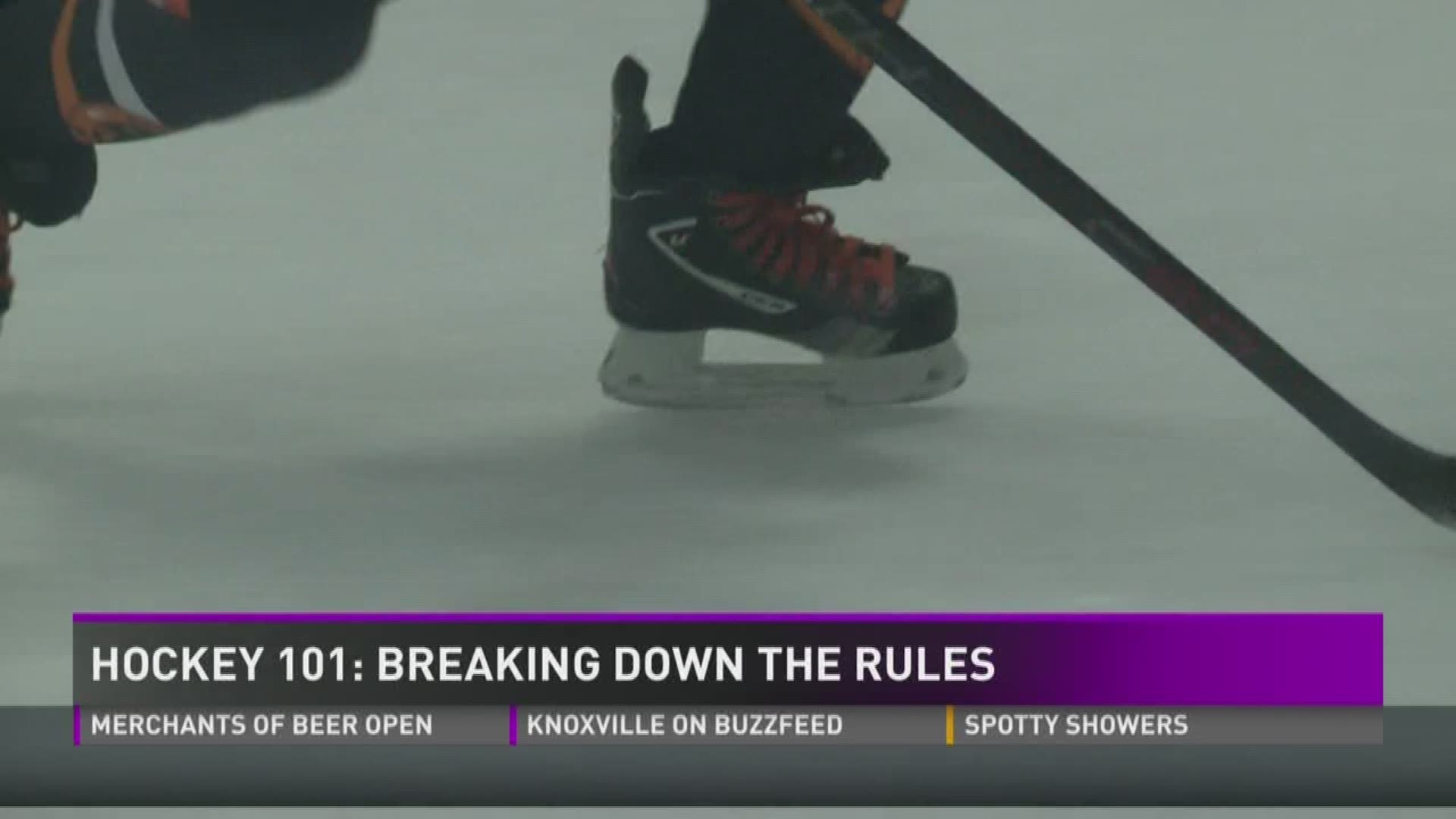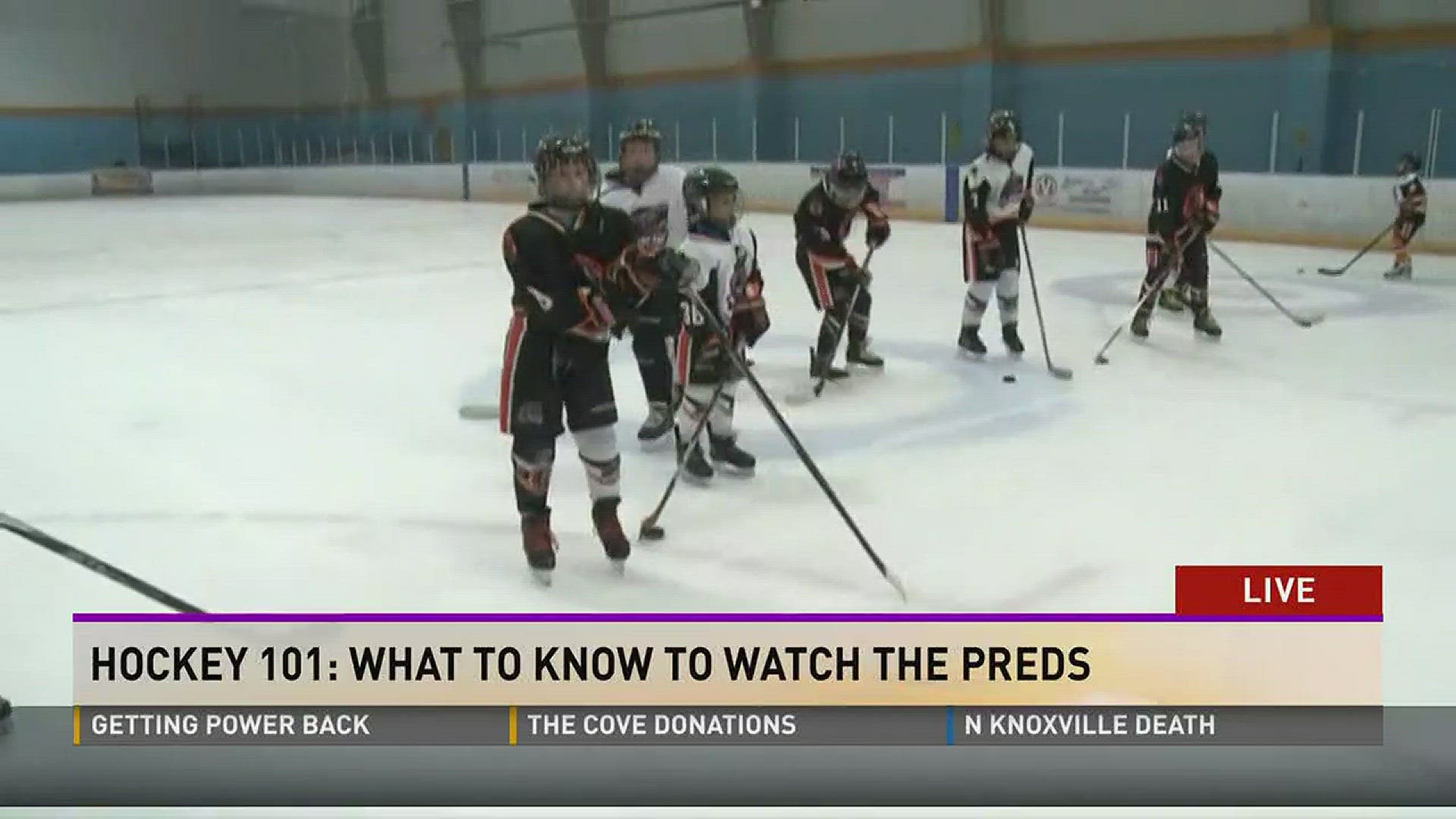The Nashville Predators have made history - they are playing in their first ever Stanley Cup Final. Their success has caused hockey fever across the state of Tennessee.
If you are new to watching hockey, some of the rules and penalties can get a little confusing, so we went to Cool Sports and enlisted the help of the Junior Ice Bears to explain some basics of the game.
What do the lines on the ice mean?
There are two blue lines and one red line on the ice. The two blue lines are used to determine if a player is off-sides, and the center red line is used to determine icing.
In order for a player to be onside, the puck has to cross the blue line before the offensive players. If that doesn't happen, the play is whistled dead. You can find more about off-sides here.
Icing is when a player shoots the puck across the center line and the opposing team's goal line without anyone touching it. The referee will blow the whistle and the play is dead. You can find more on icing here.
Face-offs
A face-off happens after play has stopped for either a penalty or other delay in the game. A player from each team tries to gain possession of the puck after the referee drops it between them.
"In the offensive zone, winning a face off can mean the difference in a scoring opportunity and finding the back of the net or not," said KJ Vorhees, director of hockey at Cool Sports.
Wrist Shot vs. Slap Shot
A wrist shot is the most common shot in hockey, and it's also the most accurate. Vorhees says these shots can reach up to 80 or 85 mph at the NHL level. The shots are taken closer into the net and are harder to defend.
A slap shot is taken from the outside and uses a lot of force. Vorhees says these shots are 100 to 105 mph at the NHL level. A slap shot is usually taken by a defenseman trying to get the puck through to the net.
Subbing
If you watch the players, they go on and off the ice a lot during the game. Line changes give players a break and a chance to catch their breath.
"Each team typically dresses six defensive players and 12 forwards," said Vorhees. "So you are changing often, especially in the playoffs because you are playing so hard. Typical line shifts are only about 30-45 seconds."
Goal Tender
If you've watched any of the games with the Predators in the playoffs, you've probably heard the name Pekka Rinne. He's the Predators' goalie, and he's really good.
"He's a tough guy to beat. He's 6 foot 6. He takes up a lot of net. He's very athletic and agile," said Vorhees. "Clearly he's the best goalie in the playoff this year."
The goal tender usually stays in and around the blue semi-circle at the net. He can use his stick, any part of his body, or he can catch the puck to keep it from going into the net.
Watch for Fun!
Still confused? That's okay! Hockey can still be fun to watch!
"Even if you don't understand the rules completely, it's such a fast high paced game. It's fun to watch!" said Vorhees.



